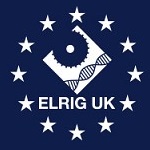Authors
D Hildebrand1; E Hoffner1; B Gonzales1; T Zacher1; F Casilag1; V Stadler1;
1 Pepperprint GmbH, Germany
Abstract
Chimera peptide vaccines including assembled B-/T-cell epitopes are one approach to induce a humoral as well as a cellular immune response. Overlapping B-/T-cell epitopes with coincident core sequences could benefit a pursued minimal protective epitope subset. Epitope prediction tools can help to forecast immunogenicity. However, the prediction is limited and cannot replace laboratory screenings. Here we describe the use of peptide microarrays combined with functional T-cell activation assays to discover overlapping B-/T-cell epitopes. We applied this approach to unravel immunogenic epitopes in Epstein-Barr Virus (EBV) Nuclear Antigen-1 (EBNA-1) as a proof of principle. To identify B-/T-cell epitopes in EBNA-1, we analyzed sera and peripheral blood mononuclear cells from EBV-positive healthy donors. First, we mapped the humoral immune response via screening sera with PEPperCHIP® EBV Peptide Microarrays, containing 5,549 linear peptides of immunogenic EBV antigens including 257 overlapping EBNA-1 peptides. Analysing the IgG responses, we selected three overlapping peptides within EBNA-1 with a consensus motif that showed high antibody-binding. Subsequently, to discover potential overlapping T-cell epitopes within these, the three peptides were synthesized and utilized in IFN-γ ELISpot assays as single peptide or peptide minipools together with published immunogenic EBV-peptides. The high sensitivity of the ELISpot assay allowed discrimination between T-cell-activating / non-activating peptides and facilitated the identification of the recognized, immunogenic core sequence.
In conclusion, our proof of principle study shows that the combination of peptide microarrays and ELISpot assays is suitable to identify overlapping B- /T-cell epitopes. As the approach is applicable to any other antigen, it could generally help to identify new peptide vaccine candidates.

